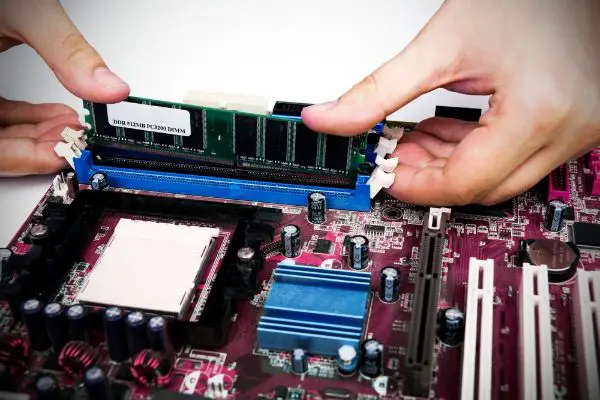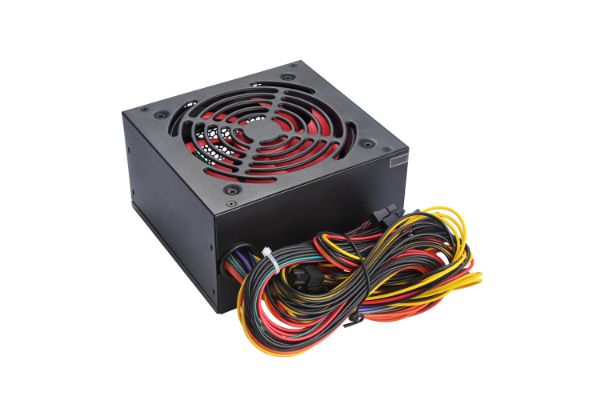Disclaimer: This post may contain affiliate links, meaning we get a small commission if you make a purchase through our links, at no cost to you. For more information, please visit our Disclaimer Page.
A computer can do a lot for us behind the scenes, but it relies on several of its components working seamlessly in order to bring us the performance we’ve come to expect from our modern setups. One of these parts is the random-access memory, otherwise something we shorten to just RAM whenever we’re discussing it. RAM is just one type of memory that the computer will use for data transfers, and it might be helpful for readers to think of it as the short-term memory.
The standard hard disk drive stores data for longer periods, but a desktop or laptop might be slower to access the files or other things it needs from here. To speed up the processes that happen, the computer can store some of the data it needs to access quickly or frequently on the random-access memory chip. Therefore, having good RAM at your disposal can help your computer perform calculations and actions at a faster pace than it otherwise might.
RAM is also one of the components that is fairly easy to swap out if you want to upgrade it. However, some users wonder if there are any tricks or things to remember when it comes to changing the RAM sticks in their computers. To answer any of these questions, this article will focus on whether you can just pull RAM out of its slot and swap it for another stick.
As we dive deeper, we’ll discuss how changing RAM can affect the computer, if it is okay to remove RAM while the device is active, and if more RAM means a need for more energy from your desktop’s power supply unit.
Table of Contents
Can I Just Switch Out My RAM?
When we talk about swapping out the RAM for different kinds or sizes, the physical changing of it should be relatively simple for most users. However, it does take a bit of knowledge and patience, just like anything that requires you to take your computer apart or get inside it. Additionally, there is more to making changes to your RAM than just taking out the old stuff and popping in some replacements.
For the physical part of the job, you will usually need to open a panel on your PC case in order to access the spot where your RAM sits in slots. Random-access memory has a few slots that sit alongside the central processing unit. If you can find this unit, look for a heatsink, and you should see the slots for RAM next to that part of the hardware setup.
The process should be similar on a laptop, but you’ll need to unscrew or slide off a portion of the bottom panel instead of taking off the side of the case. Depending on how the developer manufactured your laptop, you may need to unscrew and remove the entire bottom panel to access the RAM.
Once you’ve gained access, it is just a matter of pulling the old RAM up and out of its respective slots. You can then seat the new RAM. Your random-access memory sticks should have clips holding them inside the slots. Separate these clips in order to free up the RAM before you pull it out.
When it is time to remove it, you should only grab the RAM by the very edges, and it is important that you do so gently. Make sure that you avoid touching the gold connectors on the RAM. It is possible that nothing would happen, but touching these areas with your hands can mess with the RAM’s ability to do its job.
For the new RAM, grab it by the edges and put it down into the slot at an angle. Make sure that the gold connectors are facing a downward direction when you do this. Push the RAM into the appropriate slot, then secure it with the same clips. Put your computer back together and power it up to check the status of your new RAM.
Does Changing Your RAM Affect Your PC?
Yes, changing your random-access memory can have an impact on your computer. In a sense, this is the whole reason to change your RAM. Before we get into this part of the topic, we should make sure that readers understand just how a RAM change can alter the computer.
As we touched on previously, some computer owners are concerned about the negative effects of swapping out their RAM for a different size or type.
Unless something goes wrong with your installation of it, there should not be any negatives to upgrading your computer’s random-access memory. RAM is short-term memory, so no permanent files are on it.
Again, without other factors involved here, you should not lose any files or data when you upgrade the RAM. These parts of your computer are on the hard disk drive. Of course, you can lose some data if you swap the drive without moving anything, but RAM works differently.
Now that we know this, we can talk about some of the positives that can come about as a result of switching your RAM. We’ve mentioned these briefly in the introduction, but speed is one of the most noticeable things that can change here. When you open or program or make a request of your computer, your central processor will send a command to your hard disk.
The CPU will ask the drive to retrieve and spin up this program. After the HDD sends the program, you can imagine a digital workstation or bench where it can manipulate the data for you. Your RAM is this space, and the more of it you have, the better or faster it can make changes to the data for you.
There are two main attributes to RAM that can tell you about how good it might be for your computer. These things are the capacity and the maximum speed at which it can operate. If your random-access memory has a higher capacity, it means that, on balance, you can have more programs open at the same time.
Additionally, the speed determines how fast it can receive and process instructions. The random-access memory needs to read or write data after it gets the instructions, and faster speed will help with this part of the equation.
Faster RAM also means that the processor can talk to everything else in the hardware setup at a quicker pace, making your computer more efficient overall.
What Happens When You Remove RAM While Your PC Is On?
Nothing good can come of trying to remove your RAM while the computer is active. To change your RAM properly, it is best to both turn it off and unplug it completely. You should do this before you even open up the case to check out the current RAM setup.
There might be specialized RAM connectors for servers and their applications that might support a form of hot plugging. However, this is not the case for consumer-grade RAM or its electronics, and we are focusing on the latter here.
If you try to unseat old RAM and put in new stuff while your computer is active, it can damage the random-access memory itself, harm the central processor, or fry the motherboard in some way. It’s important to remember that the size and type of RAM you can use depends on your motherboard. Nothing will work properly without a functional motherboard.
Most random-access memory is not supposed to go into an active computer, so stray currents could harm or destroy some of the parts. Even if you did manage to seat new RAM while the computer was on, you could not use it.
Until you get back into your computer’s BIOS via a restart, the computer will not recognize or use the new RAM. In short, we do not recommend that any consumer make attempts to put new RAM in a computer that is on already.
Do I Need More PSU Power if I Upgrade My RAM?
Typically, random-access memory should only consume a few extra watts of power per stick. This is true even if you give a fairly significant boost to your RAM. Therefore, you should not need to upgrade your PSU in order to accommodate new RAM.
However, one thing you might upgrade with your RAM is your graphics processing unit. Depending on the model that you go with, these cards might need a more powerful supply unit in order to run well.
Conclusion
Random-access memory helps your computer to have more digital workspace to load programs, and it can increase the rate at which your machine reads and writes its data. Fortunately, it is fairly easy for an average computer user to replace by themselves.
However, you should take great care to make sure that you power everything down and unplug it first. Additionally, always check the specs of your motherboard before you decide which RAM to buy. Your motherboard model can only run random-access memory up to a particular speed or size.


